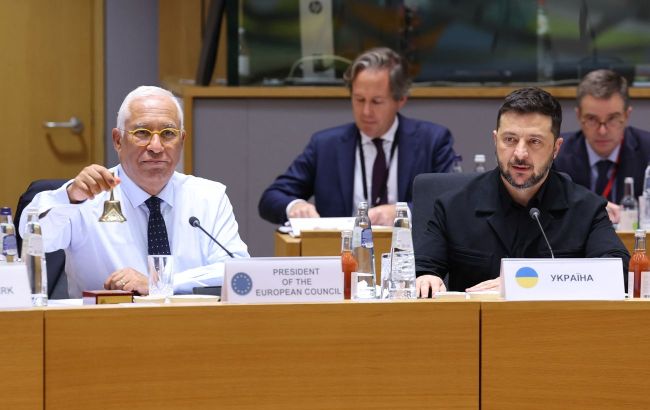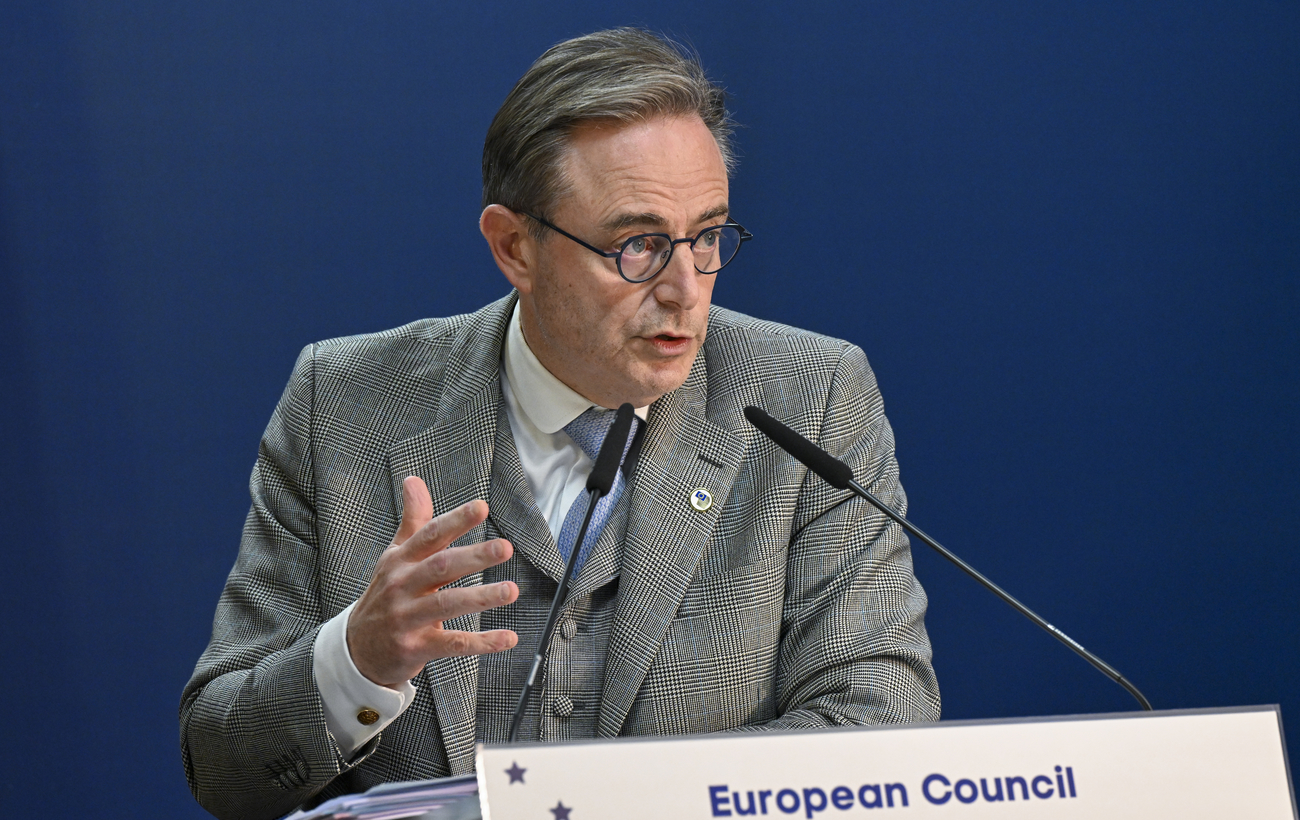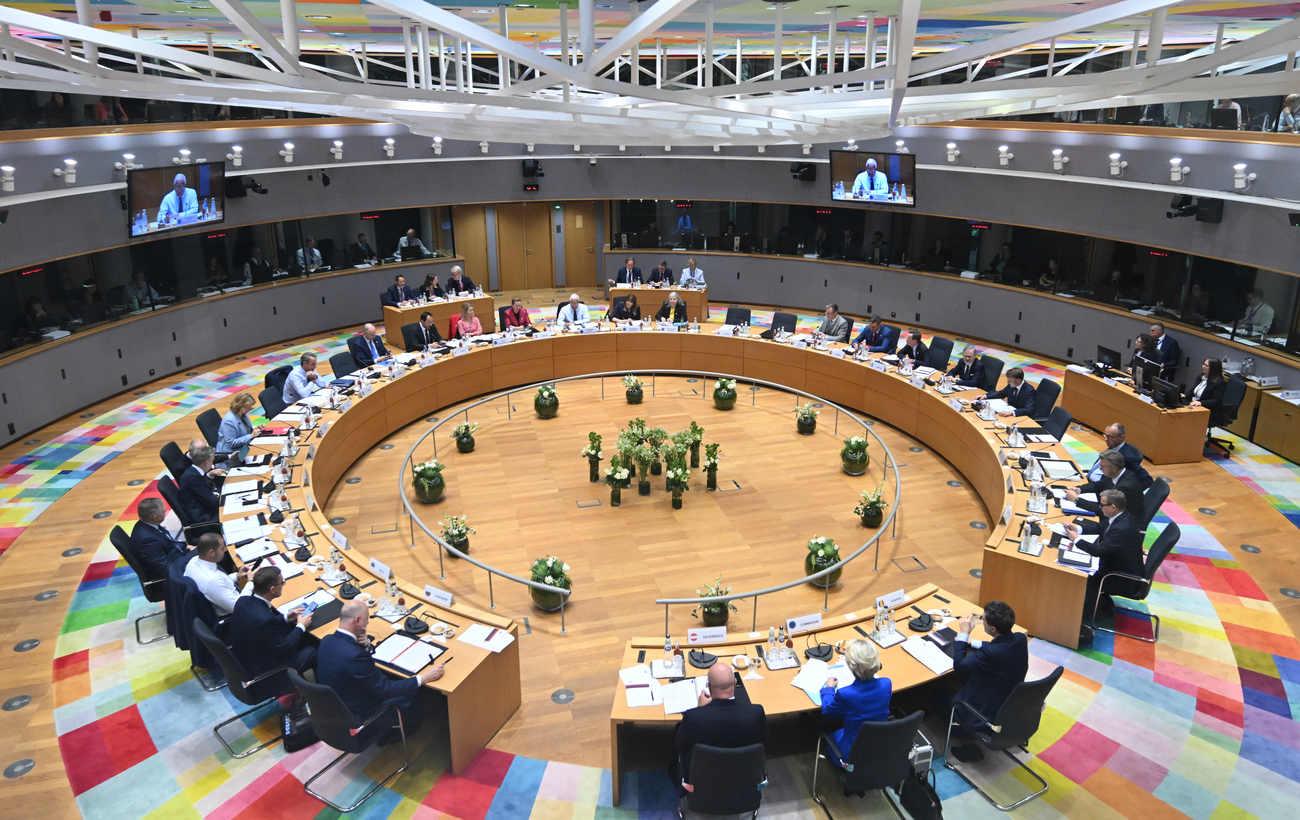Why the EU still hasn't approved reparations loan for Ukraine and what it means for Kyiv
 European Council President António Costa and Ukrainian President Volodymyr Zelenskyy (photo: EU press service)
European Council President António Costa and Ukrainian President Volodymyr Zelenskyy (photo: EU press service)
The decision on a reparations loan for Ukraine secured by frozen Russian assets in Europe is being delayed. Read below how critical this is for a country at war, and whether there are any alternatives to cover budget expenditures.
The European Union has postponed the decision to provide Ukraine with a reparations loan of €140 billion backed by frozen Russian assets. During the European Council meeting on October 23, this matter was moved to the December summit of EU leaders.
The reason was Belgium’s refusal to support lending to Ukraine at the expense of frozen assets of the Russian Central Bank, most of which are located on its territory, in the Euroclear Bank depository.
The idea of a reparations loan for Ukraine became a subject of serious discussion within the European Commission and among EU leaders in the second half of 2025. The proposal was introduced by European Commission President Ursula von der Leyen.
The €140 billion that Ukraine could receive would be secured by frozen Russian assets. They would only be repaid once Russia pays reparations.
Belgium's stance was not a surprise
Belgium’s position was not unexpected. Brussels stated in early October that it would not give its consent without legal guarantees and full risk sharing among all EU member states.
Before the European Council meeting, Belgian Prime Minister Bart De Wever said he needed full legal clarity and joint responsibility from other EU members before taking action, the Financial Times reported.
"If we want to give them to Ukraine, we have to do it all together. If not, Russian retaliation might only hit Belgium. We are a small country, and retaliation can be very hard. They might confiscate all kinds of monies of Western banks in Russia, confiscate the European-owned companies in Russia,” the Belgian prime minister said.

Belgian Prime Minister Bart de Wever (photo: European Union press service)The
European Commission President tried to object to the Belgian minister. “We are not confiscating the assets, but we are taking the cash balances for a loan to Ukraine. Ukraine has to pay back this loan if Russia pays reparations,” she said.
However, De Wever insisted on a detailed legal review. “I haven’t even seen the legal basis for the decision yet,” he said.
Frozen assets already working for Ukraine
In addition to the reparations loan, Ukraine is already receiving credit under the ERA Loans initiative. This is $50 billion (€45 billion), provided from future revenues generated by frozen assets.
“The ERA decision was made last year. In response to our demand to transfer Russian assets to Ukraine, G7 and EU leaders agreed to create a mechanism under which Ukraine was granted a $50 billion loan, with repayment made from future revenues from frozen assets,” said Deputy Head of the Presidential Office Iryna Mudra in a comment to RBC-Ukraine.
The funds from this loan are already being used for Ukraine’s recovery and defense. In 2025 alone, €6 billion under the ERA loans program is expected to go to the national security and defense sector.
Ukraine is now working to increase the profitability of frozen assets.
“At the moment, these resources are held in low-yield short-term deposits (around 1% per year), but there are opportunities to invest them long-term at higher rates (up to 7%). As European sources acknowledge, transferring the funds from Euroclear into special long-term bonds will allow investing at better rates. Our goal is to raise the effective yield of frozen assets from the current $3 billion to about $20 billion annually so that every dollar works for Ukraine,” Mudra told RBC-Ukraine.
As for the reparations loan, it is expected to be used for next year’s budget. The loan could become available in April 2026 – if there are no major delays in its approval.
The specific purposes for the funds have not yet been determined. Kyiv wants to allocate $100 billion for military needs. But without a political decision, it is too early to talk about spending categories, sources familiar with the loan negotiations told RBC-Ukraine.
“Until the Europeans agree among themselves within the EU, it’s too early to talk about this. They have their own vision on the issue. The allocation of funds will be determined during separate negotiations,” said a government source.
The loan funds are expected to be used for arms purchases. France, Germany, and Italy – supporters of financing Ukraine using frozen assets – propose ensuring that as much of the credit sum as possible returns to the EU’s own defense industry rather than going overseas.
For now, most EU members support providing the loan to Ukraine. Only Belgium is categorically against it.
Crisis or just a working process
Sources of RBC-Ukraine in both Ukraine and the EU note that while the preparation process for the reparations loan is not the most optimistic, it is not catastrophic either.
“This is a process. Of course, the delay is disappointing, but it’s not a tragedy,” said a representative of Ukraine’s financial bloc. “This loan is a matter of survival. But we’ll hope for the best,” added his colleague.
The EU also sees no reason for major concern so far. According to one Western diplomat, positive progress on the loan may come even before December, when it is scheduled for renewed discussion at the European Council.
Another factor is the change in the procedure under which the decision on asset freezes, among other sanctions, must be manually extended every six months. If sanctions are not extended for some reason, Russia could file financial claims against Belgium, demanding the return of frozen funds. Indefinite freezing of assets would reduce such risks and give EU members an incentive to support lending secured by Russian assets.
Reparations loan and macro-financial stability
If the decision on the reparations loan is adopted, Ukraine will effectively receive guarantees that its fiscal needs will be fully met even in the event of a prolonged war, experts from the ICU analytical group believe. The National Bank of Ukraine will be able to maintain full control over the currency market and exchange rate for several more years.

European Council meeting on October 23 (photo: EU press service)
“The downside of the loan is that Russian assets were originally planned to finance Ukraine’s postwar recovery. But the lack of alternative funding sources today leaves no choice for Ukraine and the EU but to start using Russian funds,” the ICU comment provided to RBC-Ukraine says.
The National Bank may also be able to lower the key interest rate more actively, which would positively impact economic development. “We expect the key rate to reach 14.5% by the end of the current year (now 15.5% – ed.). Next year, the reduction may be more significant if the reparations loan for Ukraine is approved,” the ICU noted.
The importance of the reparations loan, which could be fully used to cover the budget, can hardly be overstated. In early October, Verkhovna Rada Budget Committee Chair Roksolana Pidlasa called it Ukraine’s Plan A for survival. Unfortunately, there is no alternative Plan B for Ukraine yet.
Sources: the Financial Times, Associated Press, comments from Ukrainian officials and RBC-Ukraine sources in Ukraine and the EU, and the ICU analytical group’s commentary.

